|
|
|||||
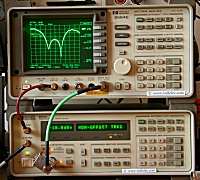 |
Signalhound 12 GHz Spectrum analyzer and tracking generator
|
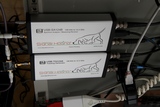 |
Maj : 17/01/23
![]()
This small page is a quick evaluation of small and modern, low cost spectrum analyzer and tracking, to replace my classical equipment of the cold war, big, heavy, obsolete and expensive, the 40 GHz HP8564E + HP 85645A Before to read this page you must have an attentive look at the constructor's site. Don't forget in chapter "Demo" the Youtube intro which is a good presentation of the products. I have the 12.4 GHz units, but there are also other variants for orher ranges. |
Cette petite page est une évaluation rapide du petit et moderne analyseur de spectre et tracking à faible coût, pour remplacer mon équipement classique de la guerre froide, gros, lourd, obsolète et coûteux, le 40 GHz HP8564E + HP 85645A Avant de lire cette page, vous devez examiner attentivement le site du constructeur et ne pas oublier dans le chapitre "Demo" l'intro Youtube qui est une bonne présentation des produits. J'ai les unités en 12,4 GHz, mais il existe également d'autres variantes pour d'autres gammes. |
|
|
|
|
|
![]()
Very fast modern laptop, Core i7, on Windows 10 (64 bits) |
|
Click to zoom this picture of the installation. |
Cliquez pour agrandir cette image de l'installation. |
![]()
Janury 2023 : Next chapters are obsolete, using the old version of software
Evolution is comming soon.
Janvier 2023 : Les prochains chapitres sont obsolètes, utilisant l'ancienne version du logiciel
L'évolution arrive bientôt.
![]()
![]()
![]() First simple example of one of strange problems using sweep / Premier exemple simple de l'un des problèmes étranges en balayage
First simple example of one of strange problems using sweep / Premier exemple simple de l'un des problèmes étranges en balayage
|
|
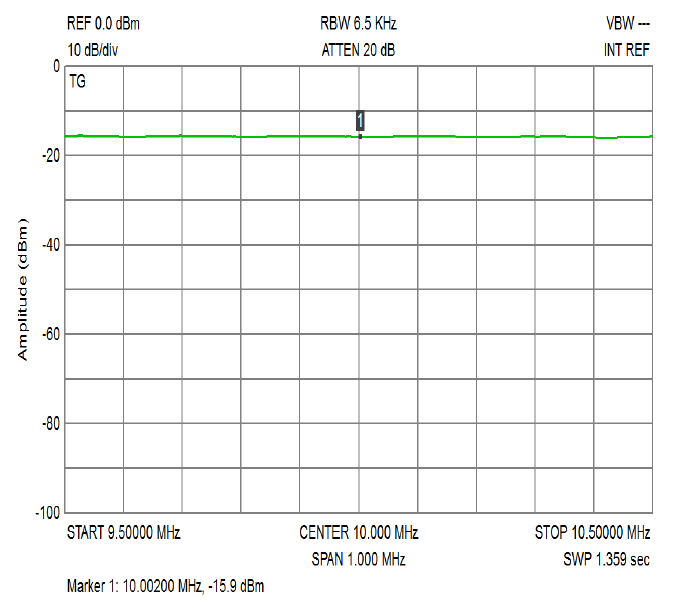
For control, GPIB screen picture of SA HP 8564E, showing spectrum up to 50 MHz |
Pour contrôle, image écran GPIB du HP 8564E, montrant le spectre jusqu'à 50 MHz |
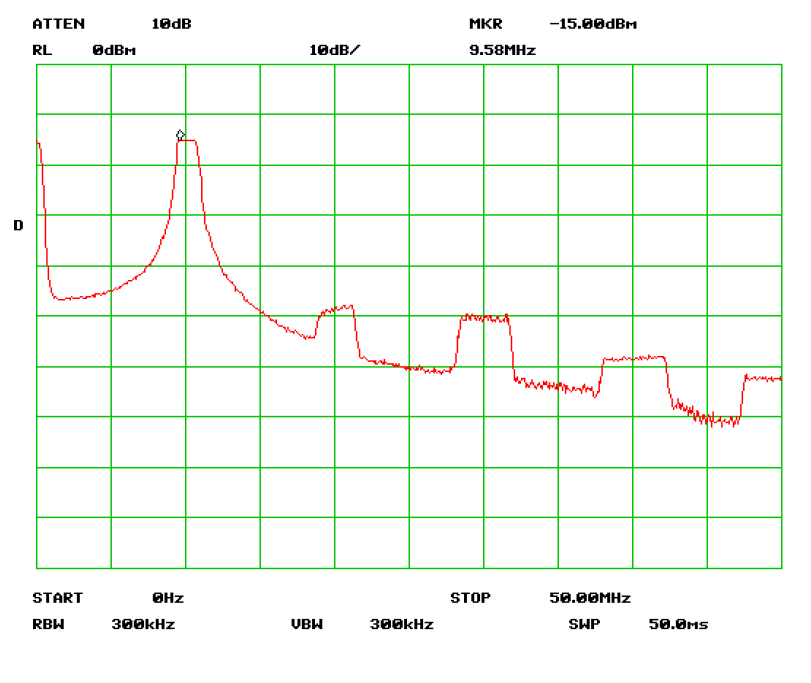
There was a big problem on software versions before 2.18b. Always use the last version! |
Il y avait un gros problème sur les versions logicielles avant la 2.18b.
|

![]()
![]()
![]() Second example : spurious frequency bug / Deuxième exemple: bug fréquence parasite
Second example : spurious frequency bug / Deuxième exemple: bug fréquence parasite
|
Image de l'écran du Signalhound SA (marqueur est de -10 à 6 = 16 dBm): Tout semble nominal |
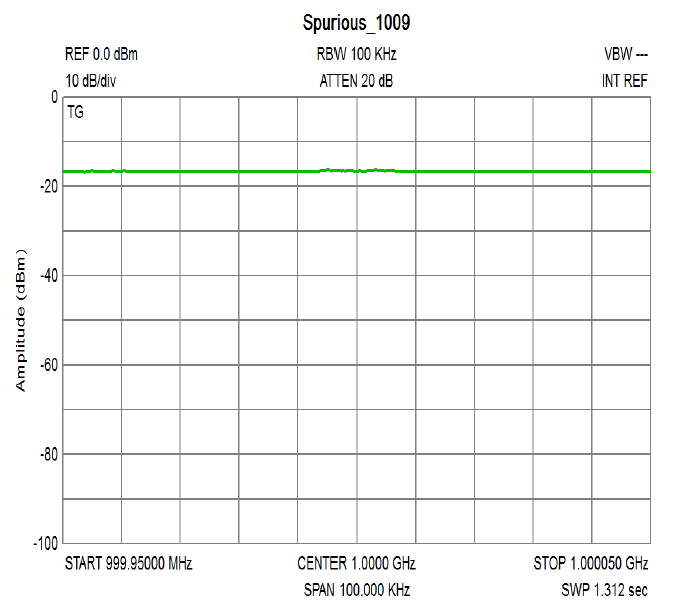
For control, screen GPIB picture of HP 8564E, showing spectrum with span 50 MHz |
Pour contrôle, copie d'écran du HP 8564E, montrant le spectre en span 50 MHz |
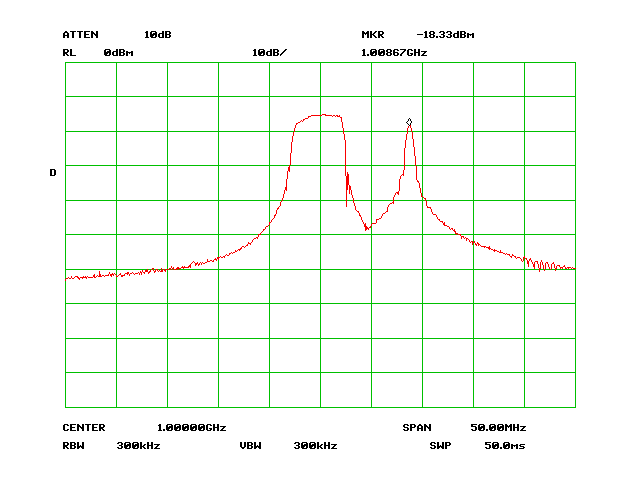
With old softwares, major bug when clicking on "stop" sweep, high level parasitic signals remains. |
Avec les anciens logiciels, bug majeur en cliquant sur "stop" balayage, les signaux parasites de haut niveau restent. |
![]()
![]()
![]() Accuracy of frequency / Exactitude de frequence
Accuracy of frequency / Exactitude de frequence
But now the good surprise. To verify frequency value, the easiest way is to look an external reference signal, it is a 10 MHz rubidium, very stable and verified with a caesium source. For everyday frequency measurements, I don't need an external reference, I know the small error to correct. |
Mais maintenant, la bonne surprise. Pour vérifier la valeur de fréquence, le plus simple est de regarder un signal de référence externe, il s'agit d'un 10 MHz rubidium, très stable et vérifié avec une source au césium. |
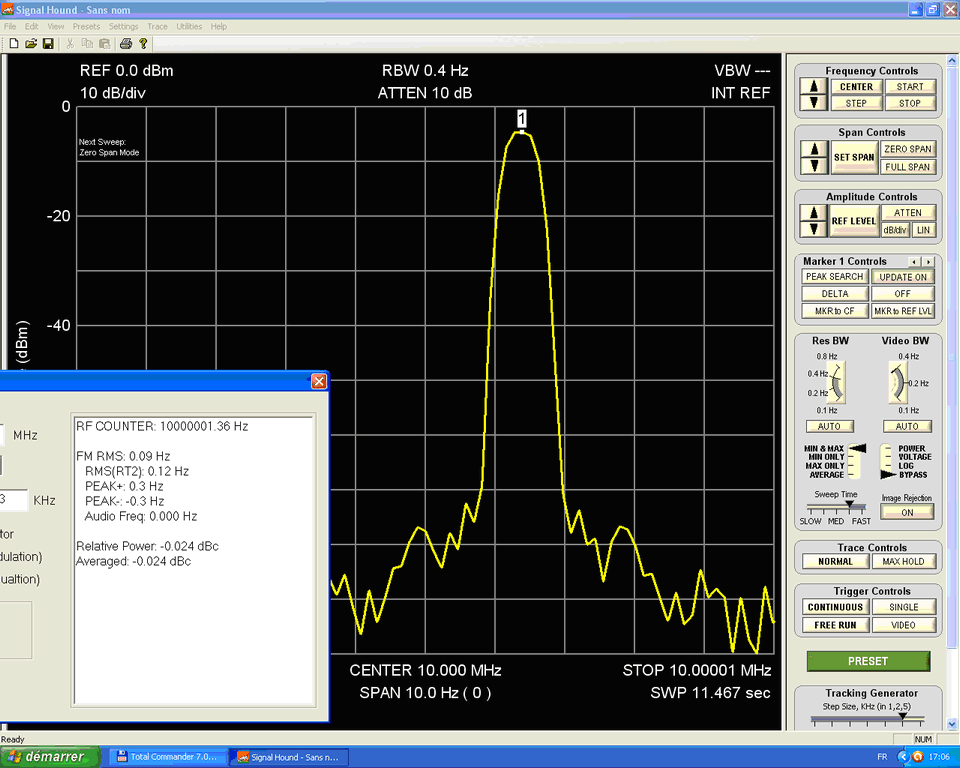
![]()
![]()
![]() Conclusion
Conclusion
After many years using classic solutions, it is a revolution to works with these small boxes.
|
Après de nombreuses années d'utilisation des solutions classiques, c'est une révolution de travailler avec ces petites boîtes. Mais il n'est pas seul sur ce marché en évolution rapide, donc vous devez être un bon chien de chasse pour choisir votre perle parfaite.
|
There is some other competitors for spectrum analyzer measurement. If you works only on VHF, UHF, Rigol has a cheap solution. Rohde & Schwarz with the ZVH 8GHz gives an autonomous product completely finished, with vector analyse and without major bugs, with Ethernet link. It is a bit more expansive than SH, but if you add a very expansive separate vector analyzer, price of the RS single unit is very competitive. The limit of 8 GHz is too low for my operations on 10 GHz band |
Il y a quelques autres concurrents pour la mesure de l'analyseur de spectre. Si vous ne fonctionnez que sur VHF, UHF, Rigol a une solution économique. Rohde & Schwarz avec le 8GHz ZVH propose un produit autonome entièrement terminé, avec un analyseur vectoriel et sans bugs majeurs, avec liaison Ethernet. Il est un peu plus cher que SH, mais si vous ajoutez un très analyseur vectoriel séparé très cher, le prix du RS complet est très concurrentiel. Je n'ai pas fait du RS mon premier choix pour quelques raisons: La limite de 8 GHz est trop faible pour mes opérations sur bande de 10 GHz Quand j'ai commandé SH, je ne pensais pas qu'il était plein de bugs! Le prix du SH était plus bas, mais c'était une mauvaise raison, maintenant je dois multiplier mon budget pour ajouter un analyseur vectoriel 10 GHz très cher. |
To replace all antique material, now good as boat anchors for mooring, with new small ones recent units with USB or Ethernet plugs, some complementary units are needed. |
|
|
|
![]() Liens
matériels de mesure et TV ham
Liens
matériels de mesure et TV ham
Autres pages sur la mesure et le radioamateurisme : ![]()
![]()
![]()
![]()
![]()
![]()